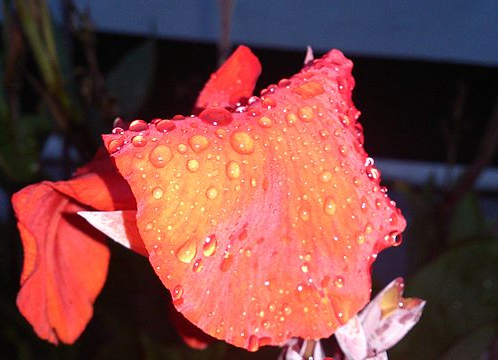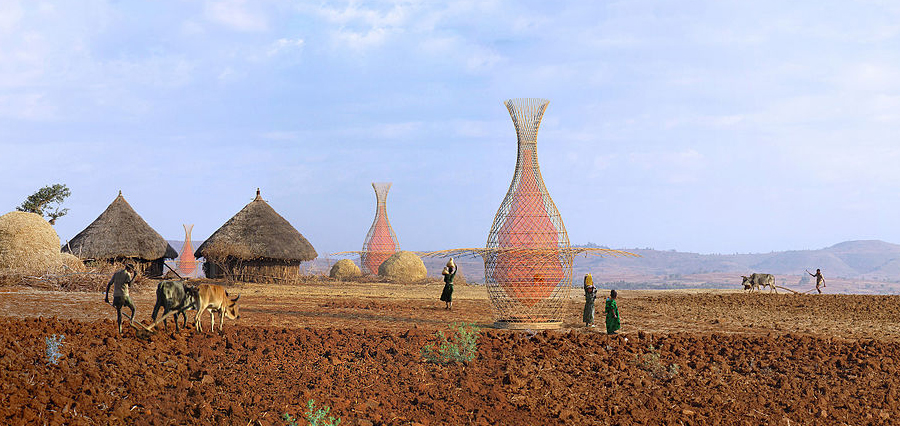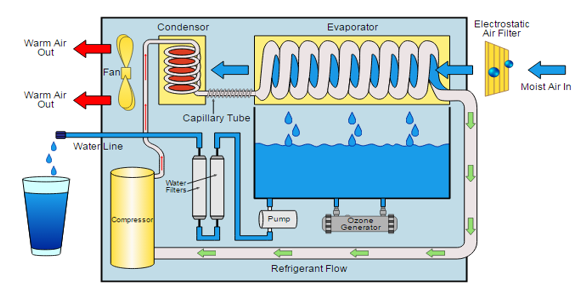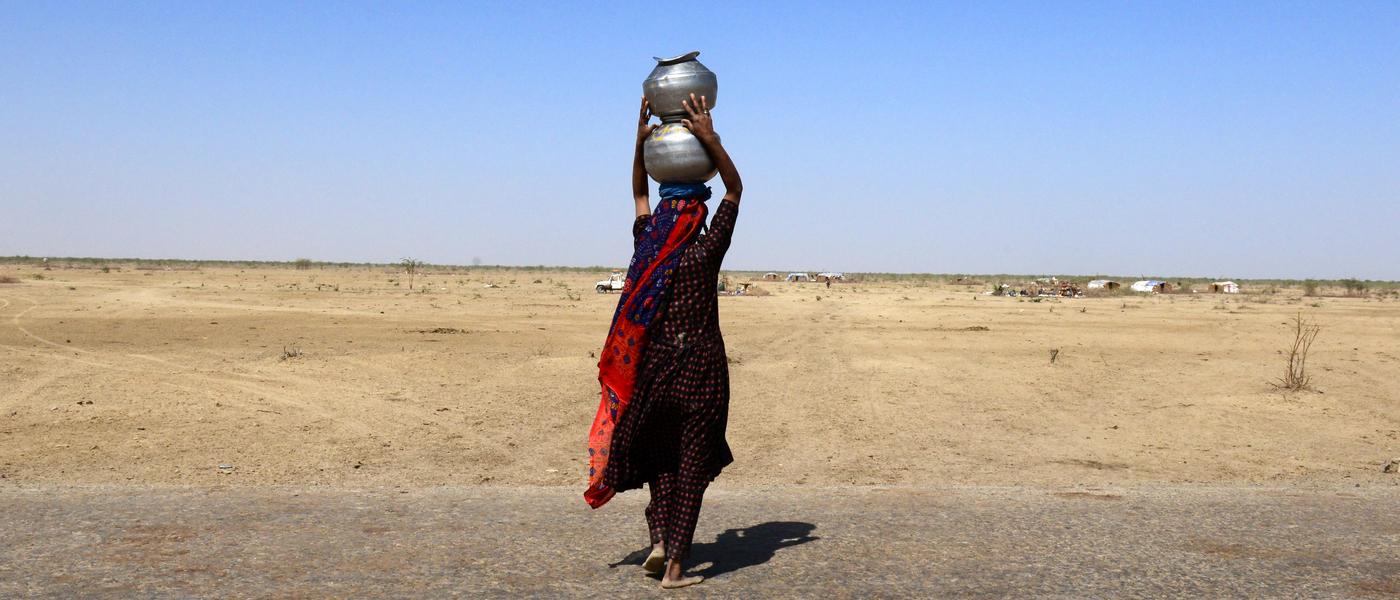A Natural Process
There is plenty of water in the air around us … it is just in vapor form. Imagine being able to condense it and use it for drinking, especially in deserts and places where the is no easy access to groundwater, ponds or lakes. Condensing water vapor requires us to cool the air to below its dew point and provide cool surfaces on which the water droplets can form. This is the case with overnight condensation on grass, flowers and leaves – resulting in drops of dew. And if you have seen an air conditioner running in hot weather, there is water dripping from it because the condenser coils cool the air to below its dew point leading to condensation of water vapor in the air. Sawayra interns are using solar power to power a water generator (or condenser). Our intent is to test this concept and use it selectively in communities living in harsh places.

Engineers Imitating Nature
While we can wait overnight for air to cool and condense some of the moisture. But the process is likely to be very inefficient in dry conditions, or you may require a very large structure to collect large amount of water, as is the case with Warkawater towers where thin fabric mesh helps water drops to condense and flow under gravity for collection. In this latter case, no additional energy is use to accelerate the process beyond natural convection and condensation.

Another engineered solution is to use solar panel to generate electricity used in turn to power the refrigeration cycle. This is no different from what we do when we use a refrigerator, air-conditioner or dehumidifier, except that intent is not to preserve food, sit in a cold room or reduce the humidity in the air. Rather, it is to get water for consumption.

The fan and compressor are powered by solar panels in our application. The project is being done by two Electrical Engineering students at the University of Houston – Aboody (abboody@sawayra.org) and Shah(shah@sawayra.org). The project is mentored by Sawayra director Samad Mian (samad@sawayra.org), who is an entrepreneur based on the West Coast.




